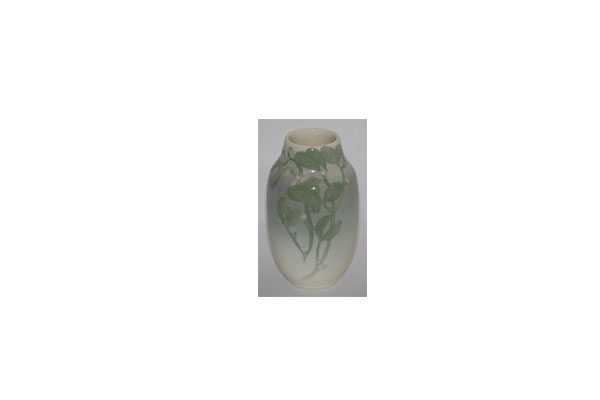
Iris
Rookwood Pottery created stunning collections between 1880 and 1967. During these years, there were many extraordinary releases. One of those releases was the favorite Iris line. Rookwood Iris, for many, is the most vivid and in fact, the most beautiful, of any Rookwood collections, and if you’re a fan of the Sea Green glaze line, odds are, you certainly are drawn to Rookwood Iris.
Described as “an incredible crystal clear, translucent gloss glaze”, the lighting efforts and the way the artists were able to seemingly work magic in the darker to lighter efforts of the glosses is inspired. This line was produced between 1893 and 1912, though it wasn’t officially released until late 1894. You’ll likely notice the base is generally white; however, there are those rarer pieces that offer a light gray and even a very light green body. If you own a Rookwood Iris piece and have noticed a “W” incised into the bottom, it stands for “white glaze”, but it gets this distinction because it’s white in color prior to glazing and not so much because of the final presentation.
This line, along with Sea Green and Aerial Blue, is from Rookwood Pottery’s “Cameo” line. According to Anita J. Ellis, in Rookwood Pottery, the Glazed Lines, it is indicative of one of “the finest glaze lines ever produced at the pottery”. We agree. It’s truly majestic in its appearance and is most celebrated of the three.
If you’re in possession of, or come across, a Rookwood Pottery Iris with no crazing, it will likely have more value than those that do show crazing. Interestingly, there was a five year period, between 1898 and 1903, which show some pieces with a unique copper or silver deposit. This was during a transition within the pottery sector as a whole. It was during this time consumers were introduced to the matte finish. While it meant Rookwood Iris would fall to the wayside, it in no way represents the beauty of the line and of course, its popularity and “in demand” status it enjoys today.



Beautiful greens, although that looks like mistletoe to me! Anyone else?
Beautiful greens, although that looks like mistletoe to me! Anyone else?